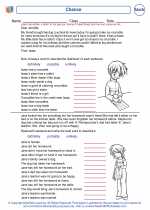Weather
Weather refers to the atmospheric conditions in a specific place at a specific time. It includes elements such as temperature, humidity, precipitation, wind, and atmospheric pressure. Understanding the weather is important for planning outdoor activities, agriculture, and for staying safe during extreme conditions.
Factors Affecting Weather
1. Temperature: The measure of how hot or cold the air is. It is influenced by the angle of the sun, altitude, and proximity to bodies of water.
2. Humidity: The amount of moisture in the air. High humidity can make it feel hotter, while low humidity can make it feel cooler.
3. Precipitation: Any form of water, such as rain, snow, sleet, or hail, that falls from the atmosphere to the Earth's surface.
4. Wind: The movement of air. Wind speed and direction can affect how the weather feels.
5. Atmospheric Pressure: The force exerted by the weight of the air above. Changes in pressure can indicate changes in weather conditions.
Types of Weather
Weather can be classified into different types, such as:
1. Sunny: Clear skies with abundant sunshine.
2. Cloudy: The sky is covered with clouds, which can lead to overcast conditions.
3. Rainy: Precipitation in the form of rain.
4. Snowy: Precipitation in the form of snow.
5. Stormy: Severe weather conditions, including thunderstorms, tornadoes, or hurricanes.
By monitoring and understanding the weather, meteorologists can make predictions and issue warnings to help people prepare for and respond to changing conditions.
[Weather] Related Worksheets and Study Guides:
.◂Math Worksheets and Study Guides Second Grade. Probability

 Worksheet/Answer key
Worksheet/Answer key
 Worksheet/Answer key
Worksheet/Answer key
 Worksheet/Answer key
Worksheet/Answer key
 Worksheet/Answer key
Worksheet/Answer key
 Worksheet/Answer key
Worksheet/Answer key
 Worksheet/Answer key
Worksheet/Answer key
 Worksheet/Answer key
Worksheet/Answer key
 Worksheet/Answer key
Worksheet/Answer key
